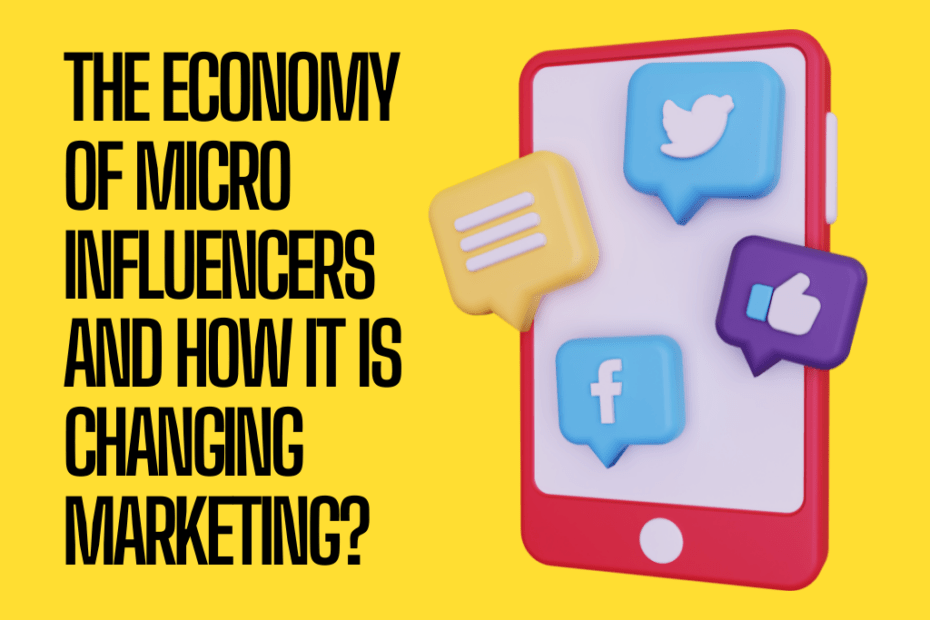Micro-Influencers have created an economy for themselves. The relationship between brands and influencers has changed significantly in recent years.
It is not that long ago when the word influencer meant celebrity endorsement. Now, companies are partnering with micro-influencers to get authentic product reviews, brand messages out there, and drive sales through their channels.
Before we go into depth about micro-influencers. You need to know what is influencer marketing. Check out my blog “What is influencer marketing and why it is important in 2022?” to understand what actually it is.
Micro-influencers typically have smaller followings than celebrity endorsements, but they can be just as impactful. Micro-influencers have the ability to reach a specific audience. They have a relationship with their followers and are usually more responsive than celebrities.
Who are micro-influencers?
Micro-Influencers have a following between 1000 to 10,000 followers and they have a specific type of audience not everyone follows them because people are following them just because of similar interests.
They are the most powerful form of influence on social media.
The rise of micro-influencers has happened because there is a growing pool of these social media users who have huge numbers of followers, and they also have significant engagement with their audience.
Micro-Influencers do not only have a specific audience but they also tend to be more inexpensive than the macro.
A recent study by eMarketer found that about 70% of micro-influencers get paid $100 for a post and on the other hand 76% of macro-influencers are getting $1000 for a post.
How to find a micro-influencer?
The most common strategy for leveraging micro-influencers is through paid promotions on social media platforms. While there are no hard numbers, the market for paid social media promotion is believed to be in the billions of dollars.
Marketers have reported success using this strategy because it gives them access to large audiences, offers authenticity, and can generate a high level of engagement with the product or service being promoted.
The second most common strategy is to ask influencers to feature the product or service in their content. There are many different ways this can be done, including asking influencers to:
- Give a brief mention of the product or service in a video review.
- Showcase the product or service in a photoshoot.
- Give an endorsement of the product or service.
- Provide a demonstration of how to use the product or service.
You also need to understand your customer psychology before you find your influencer. This is a very important step as it will guide you to create a strategy for your influencer marketing and will give you a clear idea of whom to seek for.
Why macro-influencers might be not a good fit for you?
Celebrity endorsements can be incredibly effective, but they also come with a price tag. The top influencers in the U.S. charge $10,000-$30,000 per post, which means that an advertiser must spend at least $100,000 for an influencer to even consider working with them.
But celebrity endorsements can be worth the cost if you get the right person on board. Endorsements from Kim Kardashian, for example, were shown to increase sales by 461% when she posted about a new line of sunglasses.
It’s not just celebrities that can help boost your campaign either. It turns out that influencers don’t need big names to be effective – a regular person with a large following is just as powerful.
Why micro-influencers are better than macro?
The main reason why influencers are better than brands is that they are more engaged and can give you an honest opinion about your product. The same is true for micro-influencers.
Influencers with less than 1,000 followers have a greater engagement rate than those with more than 100,000 followers.
According to MediaKix, the engagement rate of a macro influencer was around about 2.65% and 2.75% for micro-influencers.
Micro-influencers have a significantly higher engagement rate compared to macro-influencers. This means that micro-influencers tend to have their own loyal following.
They usually have more followers on their social media profiles and these followers are more likely to engage with the influencer’s content, like, comment, or share it.
This engagement leads to a higher conversion rate. For example, if you want to sell an online course on Instagram, micro-influencers will probably convert better than macro-influencers because they can interact with their audience and answer questions about the product in a much more personal way. This makes the customers feel more confident about their purchase.
How to find micro-influencers on Instagram?
It’s not always easy to identify which influencers are micro-influencers and which ones are macro-influencers.
However, there are a few tools that can help you with this task. For example, Social Blade will help you figure out the number of followers of each influencer and determine whether they have engaged audiences or not.
Then, you can compare their engagement rates with the engagement rates of other influencers.
A better way to figure out whether an influencer is a micro-influencer or not is to check their follower count and compare it with the average number of followers for that particular niche.
For example, let’s say you are running a fitness Instagram account and you want to find fitness influencers in your niche.
You can then check their follower counts on Social Blade and find out how many followers they have compared to the average number of followers for that niche.
Once you have found the influencers, it’s time to reach out to them and work out a deal where they can promote your products in exchange for some freebies or monetary compensation.
In most cases, micro-influencers are very responsive and easy to work with as long as you treat them well. They also love working with brands because they don’t get bombarded by requests like regular influencers do.
Conclusion
The economic value of a single influencer continues to rise, marketers are taking notice. Businesses are looking for alternative ways to drive sales and leads using micro-influencers. This has led to an increase in demand for tools that can help brands quickly find and engage with the right people on social media.
Sign up to receive the latest marketing, investing, and technology articles in your inbox.


Thank You, for your support and for giving me the motivation to write more blogs.
Make money doing what you love.
Thanks for your personal marvelous posting! I really enjoyed reading it, you might be a
great author. I will be sure to bookmark your blog and will
often come bzck from now on. I want to encourage you to definitely continue your great work,
have a nice afternoon!
Thank You.
I got this website from my friend who informed me about this web page and now this time I
am browsing this website and reading very informative content here.
Way cool! Those are some extremely valid points! I appreciate you penning this write-up
plus The rest of the website is really good.
It’s hard to come by experienced people for this subject,
however, you sound like you know what you’re talking about!
Thanks
I think this is among the most important info for me.
And I’m glad to read your article. But want tto remark on some general things, The website style is ideal,
and the articles is really excellent: D. Good job, cheers